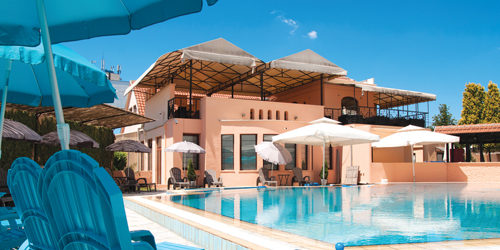
Asks Jo White, Tax Consultant at Kreston Reeves
After many years of a comparatively benign marketplace for buy-tole investors, George Osborne’s introduction of an increasingly hostile tax regime for investors, not least because of the extra 3% stamp duty land tax introduced for property purchases, has meant landlords are now having to review their circumstances.
From next April, there will be restrictions on the level of mortgage costs that can be set against rental income for tax purposes. In addition, buy-to-letters will no longer be able to claim a 10 per cent allowance for ‘wear and tear’ - only what they actually spend on maintenance, replacement items and repairs.
With these recent reductions on the tax relief for buy-to-let properties, recent press coverage has focused on the returns available from reverting to furnished holiday lets as the best way to make the most of an investment. So what is the reality?
What defines a property as a ‘furnished holiday let’?
There are special rules in order for a property to qualify as a furnished holiday let (FHL). These include:
• The property is in the UK or one of the remaining 27 countries in the European Economic Area (EEA). It is not yet clear if these rules will change in the coming years following the Brexit vote.
• The property must be furnished sufficiently for normal occupation and guests must be entitled to use the furniture.
• The property must be commercially let i.e. you must intend to make a profit.
• The property must be available to let for at least 210 days each year and the property must be let for at least 105 days each year.
Despite these specific criteria, if the reason you fail to meet these rules due to the property not being let for a minimum of 105 days in any one year (but this has been met in previous consecutive year(s)), or if you intended to let the property for the minimum period but you were unable to, the property would still meet the requirements under a ‘period of grace’ arrangement. Holders of more than one FHL property are able to take an average of all the let days to be able to meet the criteria for all their properties.
It is worth noting at this point that properties held in the UK are considered separately to properties held in the EEA. For example, if losses are made on properties held in the EEA they cannot be offset against profits made from properties held in the UK.
These rules will clearly affect investors’ choice of property purchase when investing in holiday lets. Foremost, investors will need to ensure that the property is in a desirable location to maximise the opportunity of it being let on a short-term basis.
Tax advantages of a furnished holiday let versus a conventional buy-to-let
There are commercial decisions that need to be assessed before making the decision to purchase a furnished holiday let however, there are four potential benefits which may outweigh purchasing a conventional buy-to-let property.
1. Business Property Relief (BPR) could have the effect of exempting all or part of the value of the FHL from inheritance tax, because a FHL is seen as a business. The amount of relief is dependent on whether or not the property is owned wholly or shared. Generally buy-to-let properties do not attract Inheritance Tax Relief, even if you generate all of your income running a property ‘business.’ To date, however, there has not yet been a successful case for a furnished holiday let claiming BPR.
2. Entrepreneurs’ Relief can potentially be claimed. This could thereby reduce Capital Gains Tax from 18% or 28% to 10%.
3. Where you sell a FHL it may be possible to rollover any gain, deferring the tax liability due, where you reinvest in another qualifying business asset.
4. 100% of your mortgage interest (and other qualifying fi nance costs) is a deductible expense for an FHL because they are exempt from the changes announced in the Summer Budget which are set to affect buy-to-let landlords.
5. Capital allowances can be claimed on FHLs for the purchase of a range of assets, such as furniture and white goods, as well as for certain works completed on the property, such as electrics and heating.
The most significant benefit available is the potential to claim for capital allowances. This is because allowance can be obtained as soon as you purchase the property - but only if the assets have not previously been claimed for.
Although additional information gathering is required for this (potentially by way of a Surveyor’s Report) up to £200,000 per annum (current rate) of qualifying costs can be claimed against any FHL income so the benefit of claiming is likely to significantly outweigh the cost. Buy-to-let properties can only obtain tax relief where furniture is renewed, no claim can generally be made for lighting or heating costs unless they are being repaired. Both of these differences significantly lower the items that qualify and the tax relief given.
If you are in the process of buying a buy-to-let property or a furnished holiday let - or currently own one - and would like to discuss the best ways to get the most out of your investment, please contact me or one of our specialist Kreston Reeves’ advisers.
jo.white@krestonreeves.com
01403 250926






